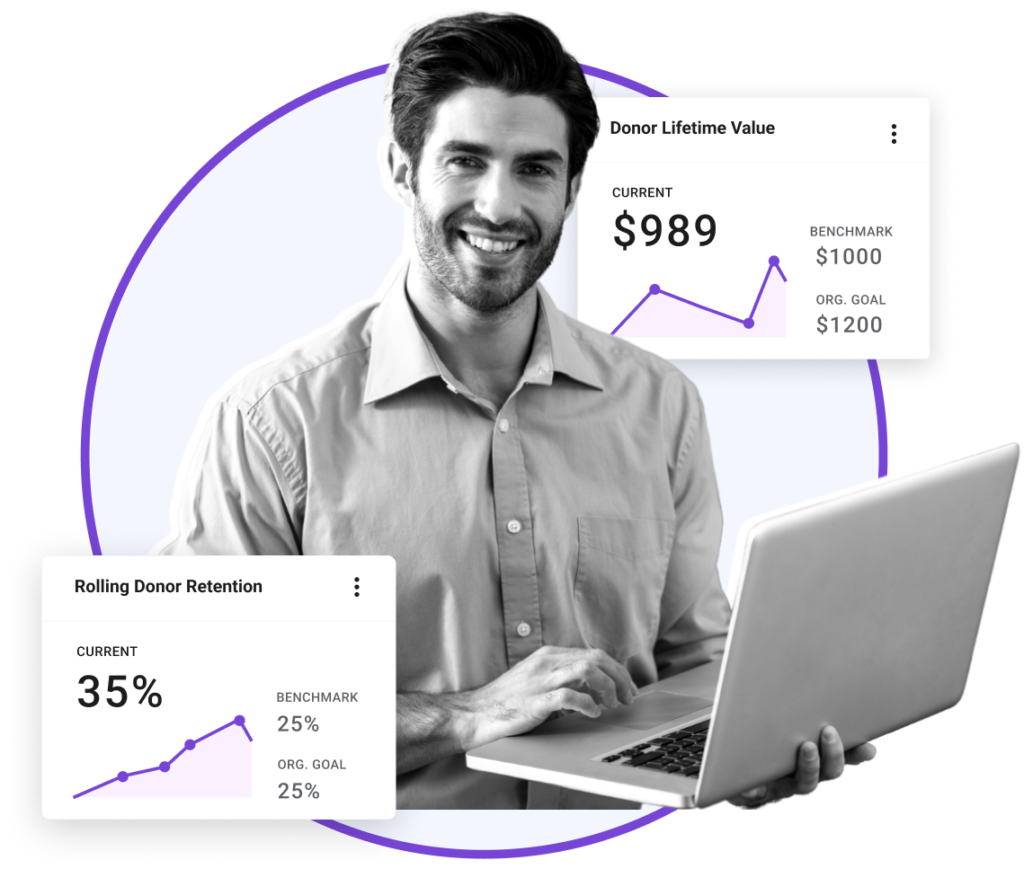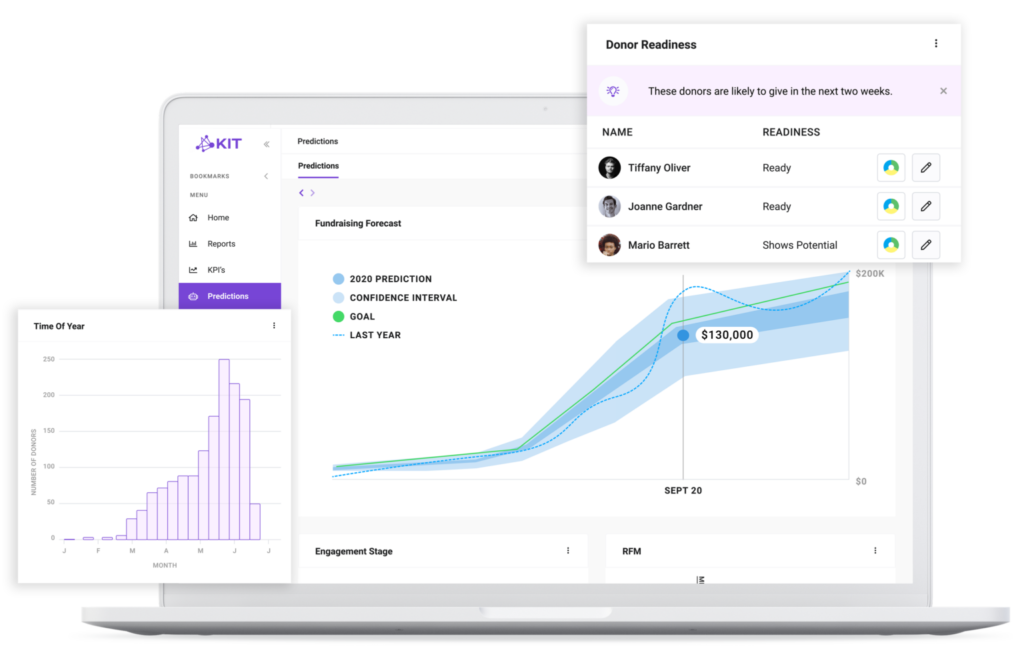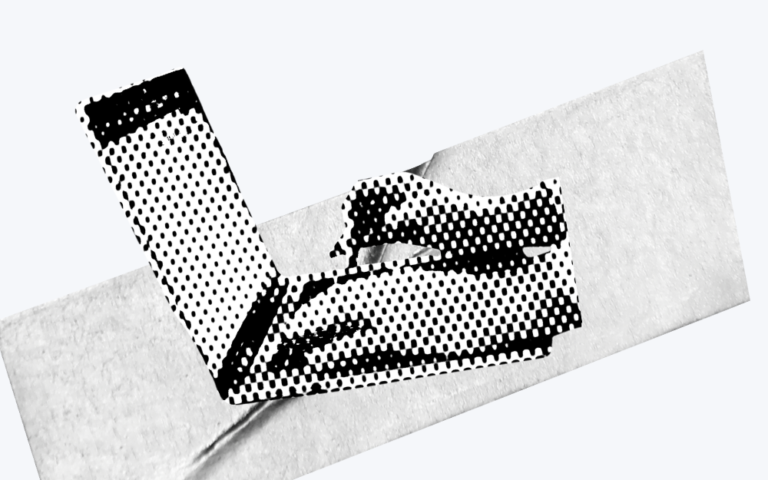There are people out there who are just as passionate about your nonprofit’s cause as you are. Even though they haven’t donated yet, they would be happy to, as long as they were properly identified and stewarded. These folks present the true challenge of fundraising: finding these people and asking them for the right amount, at the right time, in the right way.
What if I told you that the solution to this challenge was right under your nose? Yes, I believe that the key to unlocking the potential of your fundraising lies within your existing CRM data.
However, even though 87% of nonprofit professionals believe their data is important to their organization, only 6% feel that their data is being used effectively. This lack of confidence means that we need to invest more resources in uncovering the answers we have hidden in our pre-existing donor data.
By applying predictive fundraising analysis techniques to your donor database, you can find more major donors with greater ease, optimize communications, provide efficient stewardship, and improve the quality of your future solicitations.
What Is Predictive Analytics?
Predictive analysis techniques go beyond understanding what has happened to assess what will happen next accurately.
By relying on tested statistical algorithms and machine learning techniques, predictive analytics identify the likelihood of future outcomes based on historical data. As a result, it has the power to change the nature of fundraising by making it more efficient, personal, and lucrative.
Additionally, predictive analytics can help nonprofit professionals prioritize their resources based on revenue forecasts that outline when and how money will come in.
Before we dive into the predictive analytics applications, it’s essential first to understand the difference between predictive analytics and other kinds of data analytics.
Generally, there three kinds of analytics for nonprofits that are important to differentiate:
Descriptive Analytics
Insights into past and current donors generated from historical data.
Prescriptive Analytics
Insights into the likely future of donors based on past or current data.
Predictive Analytics
Insights into what fundraiser behaviors are most likely to optimize future solicitations.
In this article, I will be discussing mainly predictive analytics. However, I will also touch on prescriptive analytics as predictions are of very little use to anybody if they aren’t actionable.
The Importance Of AI-powered Predictive Analytics
Artificial Intelligence (AI) takes predictive analytics to the next level. Without it, you would have to manually analyze large volumes of data and test if your findings are legitimate over time. This process is highly time-consuming, expensive, and takes away from the more pressing work of communicating with donors.
For nonprofits, AI-powered predictive analysis is more efficient, accurate and uses fewer resources. AI can perform the same predictive analysis in a fraction of the time it would take any nonprofit staff member.
In fact, by using Fundraise Up’s AI webpage assistant, The International Community Foundation (ICF) increased its online revenue by 46% and saved 15 hours of administrative time each week. You can’t argue with those numbers!
And now, AI is more affordable than ever, as reasonably priced CRMs like Keela have AI functionalities baked into their software.
Predict Your Fundraising Outcomes
Looking for an affordable predictive analytics solution but not ready to move on from your current CRM?
Fundraising KIT syncs directly with leading donor management systems, seamlessly enabling you to leverage the power of AI and unlock the capabilities of your data so you can start raising more.
Below, I will touch on seven applications for predictive analytics that will help your shop and nonprofit make more proactive decisions.
7 Applications for Predictive Fundraising Analytics
1. Conduct Prospect Research
The beginning of a philanthropic relationship often begins with fundraisers identifying a potential donor and reaching out. Predictive analytics can make this process a whole lot easier.
Sophisticated prospect and donor research tools using predictive analytics are designed to identify potential major donors who have the capacity to give and an affinity for your cause. For example, DonorSearch creates prospect predictions by analyzing your organization’s data and comparing it against 30 unique philanthropic and wealth databases to return the most detailed and accurate results possible.
DonorSearch performs this analysis by searching your contacts’ wealth markers and philanthropic indicators to qualify the value of a prospect. For example, wealth markers like real estate ownership, stock ownership, and business affiliations are used to forecast a prospect’s potential as a major donor.
Additionally, philanthropic indicators like past giving behavior, nonprofit involvement, and political giving are analyzed to predict the likelihood that a prospect will donate to your cause. DonorSearch’s team will even manually verify top prospects to maximize screening accuracy.
2. Learn the Best Way to Reach Donors
Once you’ve identified the right prospect, or they’ve found you, predictive analytics can help you get in contact with them in a way that’ll increase your chances of a successful solicitation.
Every donor will have a specific way that they prefer to be contacted. However, when juggling all of your donors’ preferences, it can be challenging to remember each one’s preferred communication medium.
To solve this problem, the Fundraising KIT team has developed the “Best Way To Reach Out” feature that gives you the information you need to tailor your communications to specific donors. Fundraising KIT’s sophisticated machine learning algorithm analyzes your outbound email data, donation history, and registered interactions to predict what medium an individual is most comfortable with.
The Importance of Segmentation
Segmentation is the process of separating your donors, contacts, or other stakeholders into subgroups based on criteria such as preferred communication medium or average gift size. Ultimately, segmentation is the process of personalizing your messaging, and any time you can reach someone with a customized message they are more likely to respond positively to it. In fact, a study recently showed that emails with personalized subject lines are 26% more likely to be opened!
Start Segmenting Your Donors
Use this FREE Donor Segmentation Template to segment your donors and contacts based on their level of engagement.
3. Determine Each Donor’s Peak Giving Season
Although giving tends to be focused toward the end of the year, with 30% of all giving occurring in December, each donor has a different preference for when to give.
For example, it’s common knowledge that the dead times of giving are between January and February, right after the holiday season. However, if you use this schedule to take your vacation, you may miss a major donor who’s primed to give in February because they make their donations right before they file their taxes.
What’s the moral of the story? Every donor is different, and with predictive analytics, you can account for donor differences without relying on generalized assumptions or manually sifting through large data sets.
4. Target the Right Donors with the Right Campaigns
As we’ve already explored, your donors are different, and it’s quite difficult to remember their preferences. But with predictive analytics, you can figure out who to target for your upcoming campaign.
Fundraising KIT’s campaign recommendations take into consideration other campaigns contacts have contributed to, your contacts’ overall giving history, and your contacts’ assumed readiness to ensure that you’re prioritizing the right donors.
An effective predictive analysis tool will provide you with a list of individuals within your contacts that are most likely to donate to a campaign as you’re setting it up.

5. Make a Smart Ask
Have you ever found yourself questioning what the right amount is to ask a donor for is? What if you ask for too much or too little? There are often so many variables at play that it can be challenging to come up with the perfect amount.
This is where Smart Ask comes in! This predictive tool provides a recommended donation amount and range to ask donors for. Research tells us that asking your donors for the right amount can increase the likelihood of soliciting a gift while reducing the chances of underestimating their ability to give.
To optimize the accuracy of each ask, KIT calculates your donors’ Smart Ask every 24 hours based on variables like their average donation amount and the amount of their most recent donation. For a prospect, the median donation amount for the organization is used to build the suggestion.
For recommendations to be as accurate as possible, KIT even disregards ‘outstanding gifts.’ For example, if a recurring donor has given $25 each month for the past four years and made a one-time donation of $500 three years ago, the $500 donation will be exempted from the Smart Ask evaluation.
Ultimately, KIT can ensure you get the most out of your donors without asking for too much.

6. Make Better Organizational Decisions
Predictive analytics can also help your board members and directors make accurate decisions. Through gaining predictive insights into where donations are likely to come from in the future, nonprofit leaders can decide where they should focus their efforts.
For example, suppose 95% of your donations come from major donors. In that case, you will have a less reliable revenue stream going forward as just a few donors determine your organization’s future.
To respond to this dilemma, prediction-focused software would prescribe the diversification of your fundraising techniques, perhaps insisting that you invest more resources into digital or peer-to-peer fundraising.
7. Forecast Your Donation Revenue
Additionally, predictive software can provide fundraising revenue predictions by considering factors like revenue trends, strategic goals, and expected performance. These predictions provide nonprofit leaders with the information they need to outline long-term goals for their mission.
For example, if an executive director were looking to hire a Data Entry assistant, they would consult their predictive analysis to see whether or not revenue is expected to increase to the point where they could afford another salary.


Talk to a fundraising expert today to learn more about how Fundraising KIT can quickly and easily help your nonprofit raise more for your cause.
As a fundraiser, you may not be able to predict everything. Sometimes your outdoor event will get rained on, your star donor will back out of their commitment, or a donation will get lost in the mail.
But, with predictive analytics, you have the power to be more prepared and foresee opportunities you wouldn’t otherwise notice, all with the data you already have. With predictive analysis techniques, you can transform your fundraising and start preparing for the donation that hasn’t even happened yet.

Jack Showers
Nonprofit Research Analyst at KIT
When Jack isn’t cheering for the Raptors or watching an 80s action movie, he’s studying the social sector and producing content for nonprofit professionals. As a Nonprofit Research Analyst at KIT, an AI-powered insights and reporting toolkit, he is especially passionate about helping fundraisers save time and raise more money for their cause.







